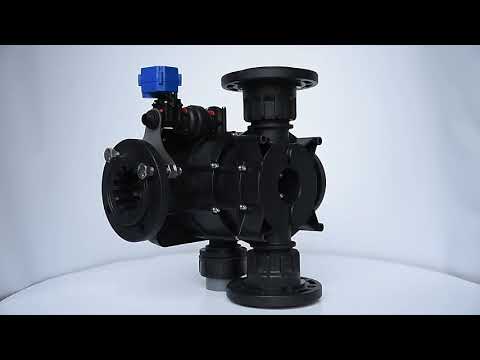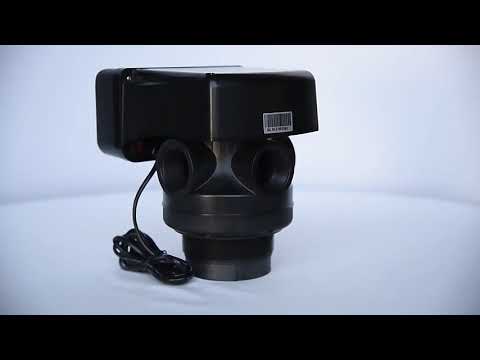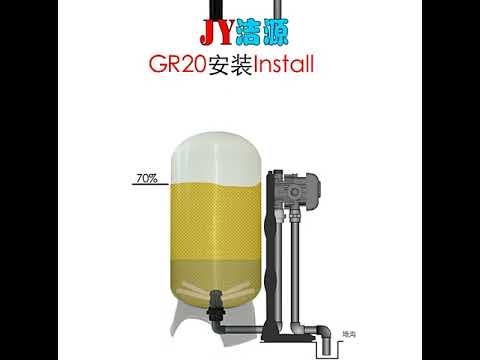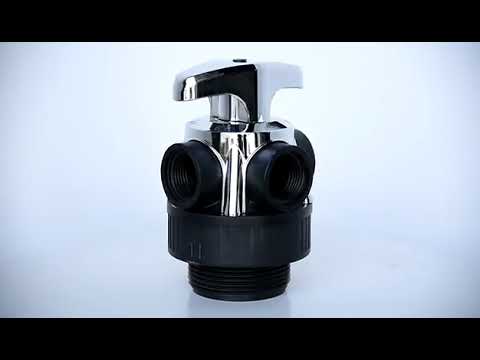“Efficiently regulating water quality for a smoother experience.”
Table of Contents
Benefits of Using a water softener control valve
Water softeners are essential devices for households that have hard water. Hard water contains high levels of minerals such as calcium and magnesium, which can cause a variety of issues such as scale buildup in pipes and appliances, soap scum on dishes and clothes, and dry skin and hair. One of the key components of a water softener is the control valve, which plays a crucial role in the softening process.
The control valve is responsible for regulating the flow of water through the water softener, ensuring that the resin beads inside the tank are properly regenerated and that the softened water is distributed throughout the household. The control valve operates based on a series of cycles that are programmed into the water softener, each serving a specific purpose in the softening process.
The first cycle is the backwash cycle, which occurs after the water softener has been in use for a certain period of time. During this cycle, the control valve reverses the flow of water through the tank, flushing out any accumulated sediment and debris from the resin bed. This helps to prevent clogs and ensures that the resin beads can effectively remove minerals from the water.
Following the backwash cycle is the regeneration cycle, where the control valve introduces a brine solution into the tank to recharge the resin beads. The brine solution is a concentrated saltwater solution that helps to strip the accumulated minerals from the resin beads, allowing them to continue softening the water. The control valve carefully measures the amount of brine solution needed based on the water usage in the household, ensuring that the resin beads are properly regenerated.
Once the regeneration cycle is complete, the control valve initiates the rinse cycle, where clean water is flushed through the tank to remove any remaining brine solution. This helps to prevent salty water from entering the household’s plumbing system and ensures that the softened water is free from any residual salt.
The final cycle is the service cycle, where the control valve allows softened water to flow through the household’s plumbing system. During this cycle, the control valve monitors the water usage in the household and adjusts the regeneration schedule accordingly to ensure a constant supply of softened water.
Overall, the control valve is a critical component of a water softener, ensuring that the resin beads are properly regenerated and that the softened water is distributed efficiently throughout the household. By following a series of programmed cycles, the control valve helps to maintain the effectiveness of the water softener and provide a continuous supply of soft water to the household.
In conclusion, the control valve is a key component of a water softener, playing a vital role in the softening process. By regulating the flow of water through the water softener and following a series of programmed cycles, the control valve ensures that the resin beads are properly regenerated and that the household receives a constant supply of softened water. Investing in a water softener with a reliable control valve can help to prevent the negative effects of hard water and improve the overall quality of water in the household.
Step-by-Step Guide on How a Water Softener Control Valve Works
Water softeners are essential appliances in many households, especially in areas with hard water. These devices work by removing minerals such as calcium and magnesium from the water, which can cause limescale buildup in pipes and appliances. One crucial component of a water softener is the control valve, which regulates the flow of water through the system. In this article, we will explore how a water softener control valve works, step by step.
The control valve is typically located at the top of the water softener tank and is responsible for controlling the regeneration process. This process involves flushing the resin beads inside the tank with a brine solution to remove the accumulated minerals. The control valve is equipped with a timer that initiates the regeneration cycle at predetermined intervals, usually during off-peak hours to ensure a continuous supply of soft water.
| Model | Central tube | Drain | Brine tank connector | Base | Maximum power | Operating temperature |
| 9000 | 1.05″ O.D. | 1/2″NPT | 1600-3/8″ | 2-1/2″-8NPSM | 8.9W | 1℃-43℃ |
When the control valve initiates the regeneration cycle, it first closes off the inlet and outlet ports to prevent water from entering or leaving the tank. This is achieved by a series of internal seals and pistons that are activated by the valve’s motor. Once the ports are closed, the control valve opens a bypass valve to divert water flow away from the tank and into the drain.
Next, the control valve initiates the backwash cycle, where water is flushed through the tank in the opposite direction to dislodge any debris or sediment trapped in the resin bed. This process helps to maintain the efficiency of the water softener and prolong its lifespan. The control valve regulates the flow of water during the backwash cycle to ensure thorough cleaning of the resin bed.
After the backwash cycle is complete, the control valve moves on to the brine draw cycle, where a concentrated brine solution is drawn from the brine tank and injected into the resin bed. The brine solution helps to regenerate the resin beads by replacing the trapped minerals with sodium ions. The control valve carefully meters the flow of brine to ensure optimal regeneration of the resin bed.
Once the resin bed is fully regenerated, the control valve initiates the rinse cycle to flush out any remaining brine solution from the tank. This step is crucial to prevent the soft water from tasting salty and ensure that the water softener operates efficiently. The control valve controls the flow of water during the rinse cycle to ensure thorough rinsing of the resin bed.
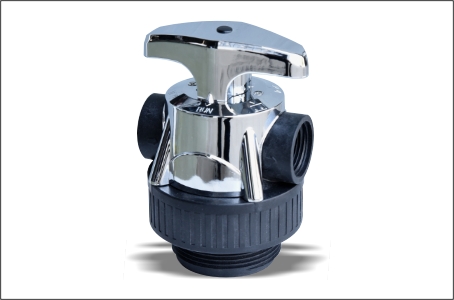
In conclusion, the control valve is a critical component of a water softener that regulates the regeneration process to ensure the efficient operation of the system. By following a series of carefully orchestrated steps, the control valve helps to maintain the performance of the water softener and provide a continuous supply of soft water to the household. Understanding how a water softener control valve works can help homeowners appreciate the importance of regular maintenance and proper operation of their water softening system.


